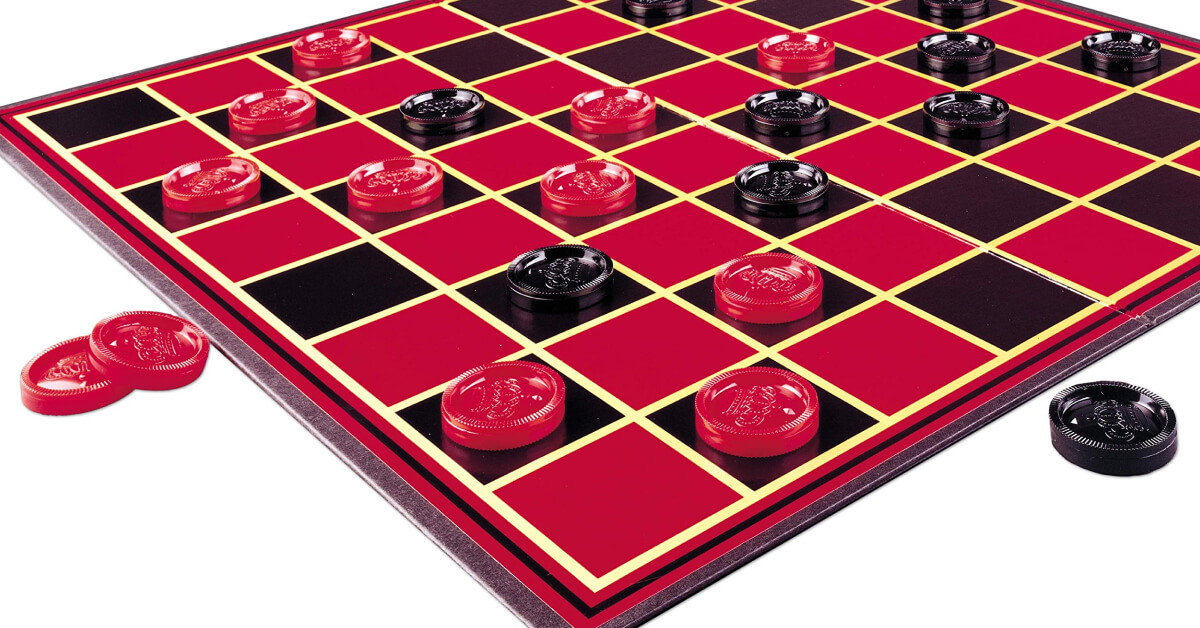Checkers Board Game also known as Draughts in some regions, is a classic two-player board game that has been enjoyed for centuries. It’s a strategic and engaging game that requires careful planning and skillful execution. Whether you’re a beginner or a seasoned player looking to brush up on the rules, this article will provide you with a comprehensive guide on how to play Checkers.
Introduction to Checkers
Checkers is played on an 8×8 square board with alternating dark and light-colored squares. Each player starts with 12 pieces, commonly represented by round disks, typically in two different colors, one dark and the other light.
The primary objective of the game is to capture all of your opponent’s pieces or immobilize them in a way that they cannot make any legal moves. The player who accomplishes this wins the game.
Setting Up the Board
Before the game begins, players must set up the board correctly
- Position the board: Place the 8×8 square board between the two players, ensuring that each player has a light-colored square at the right corner of the board nearest to them.
- Arrange the pieces: Each player places their 12 pieces on the dark-colored squares in the first three rows closest to them. Ensure that all pieces are positioned correctly at the beginning of the game.
Basic Movement Rules
Checkers has straightforward movement rules, but they are crucial for understanding the game’s strategy
1. Diagonal Movement
Pieces can only move diagonally on the dark squares. Regular moves are limited to one square forward diagonally towards the opponent’s side of the board.
2. Capturing
If a player’s piece is adjacent to an opponent’s piece and there is an empty square diagonally beyond the opponent’s piece, the player can perform a “capture.” To do this, the player must jump over the opponent’s piece and land in the empty square on the other side. Capturing is mandatory when possible.
3. Multiple Captures (Jumping)
If a player’s piece can continue capturing by making successive jumps over multiple opponent pieces, they must do so. The sequence of jumps can be in any direction, forward or backward.
4. Crowned Pieces (King)
When a piece reaches the farthest row on the opponent’s side of the board, it is “crowned” and becomes a “King.” A King can move and capture diagonally both forward and backward.
Capturing Rules and Its Limitations
The capturing mechanic in Checkers adds depth and excitement to the game. Here are some essential rules related to capturing
1. Multiple Captures
As mentioned earlier, if a player’s piece can continue capturing, they must do so. This allows skilled players to create long sequences of jumps and capture multiple pieces in a single turn.
2. Forced Capture
If a player has the opportunity to capture their opponent’s piece, they must do so. A player cannot choose to make a regular move if capturing is possible.
3. Crowned Piece Capture
Kings have a unique capturing ability. They can move and capture diagonally in any direction, both forward and backward. This makes Kings more powerful and versatile on the board.
4. Chain Captures
If a player’s piece makes a capture that enables it to continue capturing other pieces and form a chain of jumps, they must complete the entire sequence. The chain capture can involve multiple pieces and can occur in different directions.
5. Capturing Limitation
A piece cannot capture a friendly piece, and the capturing player cannot change direction mid-capture. If a player begins a capture sequence in a specific direction, they must continue in that direction until they can no longer capture more pieces.
Kinging (Crowning) and Its Strategic Importance
As mentioned earlier, when a piece successfully reaches the farthest row on the opponent’s side of the board, it is “crowned” and becomes a “King.” The process of kinging a piece is essential to understand, as it significantly impacts the strategic possibilities in the game.

1. Promotion
When a player’s piece reaches the last row on the opponent’s side of the board, it is promoted to a King. The player announces this promotion, and the piece is then crowned by stacking another piece of the same color on top of it, signifying its new status.
2. King’s Movement
The crowned piece (King) gains enhanced mobility compared to regular pieces. Kings can move and capture diagonally in both forward and backward directions. This makes Kings much more powerful and versatile on the board.
3. Strategic Importance
The promotion of a regular piece to a King is a significant turning point in the game. Kings can cover more ground and threaten multiple directions, making them valuable assets in the pursuit of capturing the opponent’s pieces. Players must be strategic in their movements to create opportunities for promotion.
Winning the Game
The game continues until one of the following outcomes is reached
1. Capturing all of the opponent’s pieces
If a player successfully captures all of their opponent’s pieces, they win the game. This requires strategic planning and execution to eliminate the opponent’s forces efficiently.
2. Immobilizing the opponent
If a player places their opponent in a situation where they cannot make any legal moves, the game is won. This can happen when a player’s pieces are blocked or captured, leaving them with no available moves.
3. Stalemate
A stalemate occurs when neither player can win the game. This situation arises when both players have a few pieces left, and they cannot capture each other due to the specific arrangement of the pieces on the board.
See More : Downfall Board Game Rules Strategy Tips & How To Play
Conclusion
Checkers is a timeless board game that has entertained people of all ages for generations. With straightforward rules, but deep strategic elements, it continues to be a favorite pastime for many. Whether you’re playing casually with friends and family or competing in official tournaments, mastering the art of Checkers




